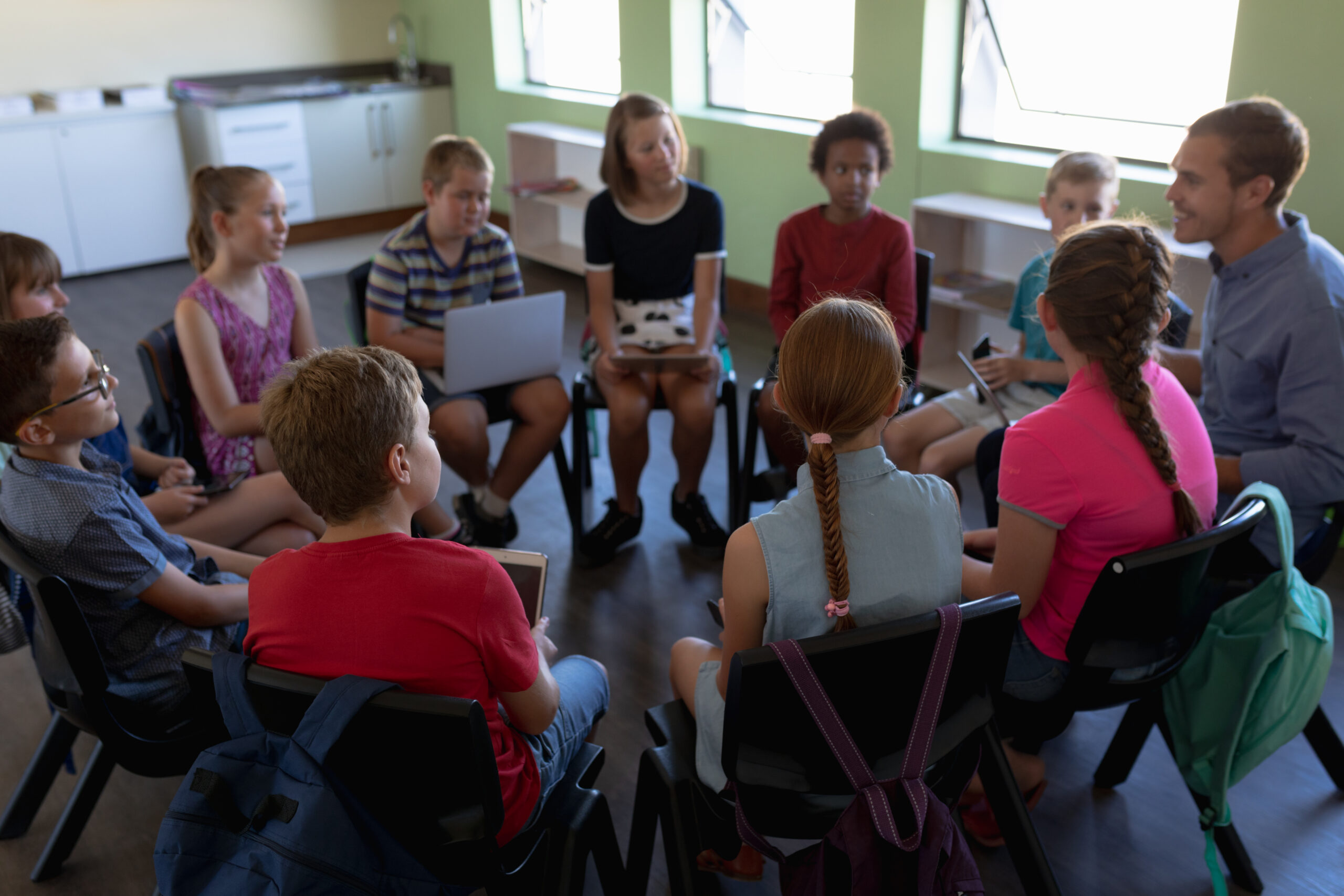Middle school is a time of growth, challenge, and change for students. When conflicts arise or rules are broken, restorative practices provide a way to address the root of the problem rather than just punishing the behavior. Below are three restorative practices that are highly effective in middle school settings, along with the pros and cons of each.
1. Restorative Circles
Restorative circles are a safe and structured way to build community and address conflicts. During a circle, students have the opportunity to express their thoughts and feelings without fear of judgment. A facilitator guides the conversation, ensuring that everyone is heard and that the group works together to find a solution.
Circles can be proactive, fostering trust and understanding before any conflict arises, or reactive, helping students repair harm after an incident. They encourage empathy, accountability, and communication—all skills that middle schoolers need to develop for long-term success.
- Pros:
- Builds a sense of community: Restorative circles help foster a sense of belonging and trust among students.
- Teaches empathy: Students learn to listen to their peers’ perspectives, which helps them build empathy.
- Encourages accountability: Taking responsibility for actions in front of peers makes the resolution more impactful.
- Cons:
- Time-consuming: Organizing and facilitating a circle requires time, which can be difficult during a busy school day.
- Depends on student participation: Circles rely on students being open and willing to share, which can be challenging with more reserved students.
2. Restorative Conversations
Sometimes, all it takes to resolve a conflict is a one-on-one conversation. Restorative conversations focus on open dialogue between the involved parties to explore the impact of their actions, how others were affected, and what can be done to make things right. These conversations help students reflect on their behavior and learn from their mistakes rather than simply facing consequences without understanding why their actions were wrong.
Restorative conversations can be informal, like a quick check-in between classes, or more structured with a teacher or counselor guiding the discussion. In either case, the goal is the same: helping students own their actions and make amends.
- Pros:
- Quick and effective: Restorative conversations can be done on the spot, making them flexible for busy school days.
- Personalized: One-on-one conversations allow for tailored discussions that address the individual needs of the student.
- Prevents escalation: Addressing conflicts early and personally can stop them from turning into larger issues.
- Cons:
- Can be superficial: Without proper facilitation, the conversation may not dig deep enough to address the root cause of the behavior.
- Requires skill: A well-trained facilitator is key to ensuring the conversation leads to meaningful reflection and change.
3. Restorative Labs
Reallyville’s Restorative Labs are specifically designed for middle schoolers who need to reflect on their behavior and learn from their mistakes. Administrators can assign to students that have demonstrated specific problem behaviors, providing them with an opportunity to understand the reasons behind their actions and how they affected others.
Each Restorative Lab is focused on a particular type of behavior, whether it’s inappropriate language, bullying, or disruptive classroom behavior. The labs are interactive and guide students through self-reflection, helping them connect the dots between their actions, the harm caused, and how to move forward positively.
Restorative Labs lead seamlessly into restorative conversations with administrators, facilitating personal connection at a deeper level. They empower students to make better choices in the future.
- Pros:
- Targeted and specific: Each lab is focused on a particular misbehavior, offering a tailored approach.
- Interactive and engaging: The digital format makes learning engaging for students, with interactive elements that keep them involved.
- Self-paced: Students can work through the material at their own speed, encouraging deeper reflection.
- Time-Saving: Labs take no time to prepare, and implementation speeds up the restorative process, giving administrators more time in their busy schedules.
- Requires technology: Access to devices and the internet may be a barrier for some schools.
- Small Cost: There is a small cost associated with the labs, but it is an affordable option that pays for itself in both time and benefits. The Labs help address individual student needs while giving administrators an easy and powerful tool, making it a smart investment for any school.
Restorative Practices
Restorative practices are essential in middle schools because they help students understand the real-world impact of their actions while also providing the tools to repair harm and rebuild trust. By using a combination of restorative circles, conversations, reflection forms, and our Restorative Labs, schools can foster a more compassionate, understanding, and respectful environment for everyone.
These practices not only resolve conflicts—they help students grow. By giving students the space to reflect, take accountability, and make amends, we’re building a school culture that promotes empathy, responsibility, and lifelong learning.

